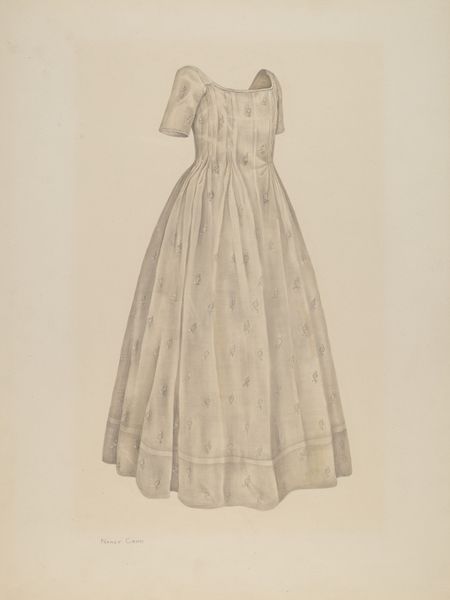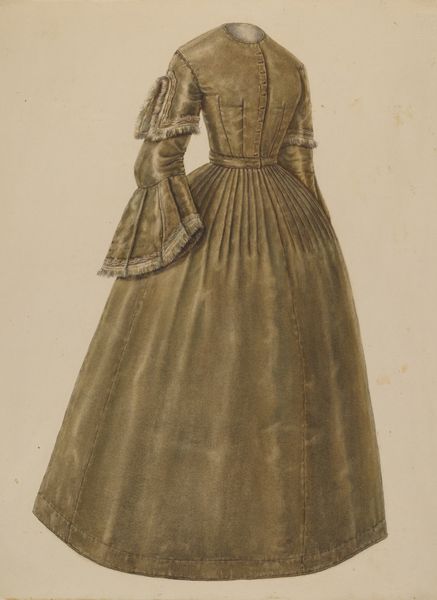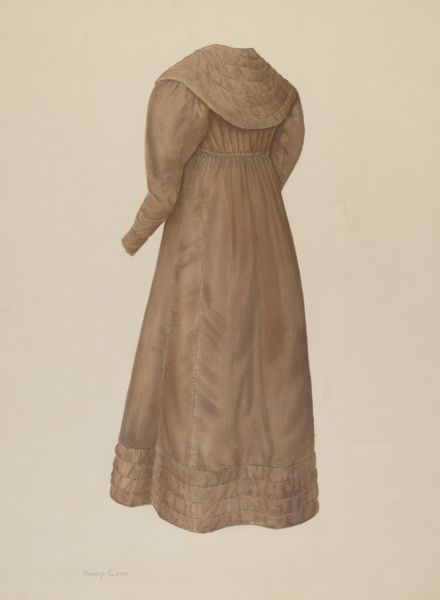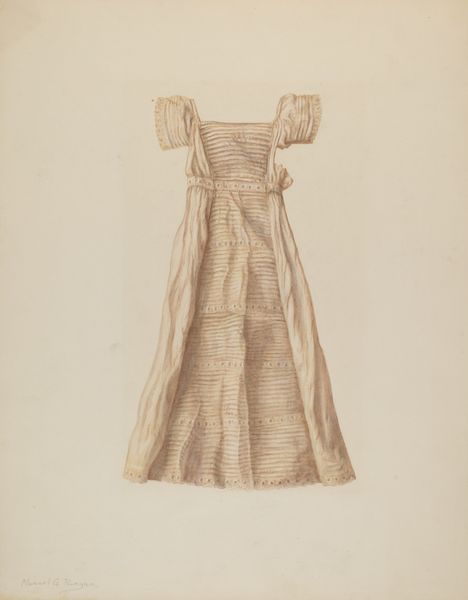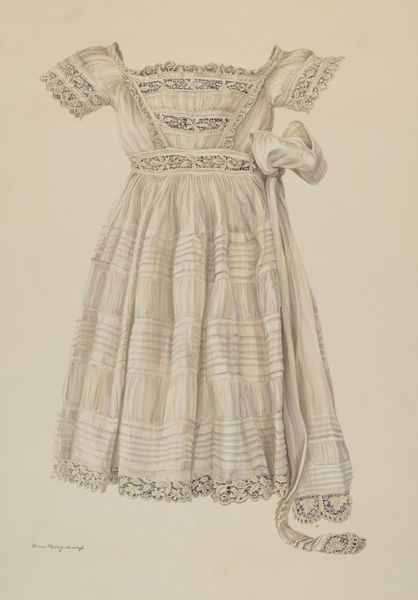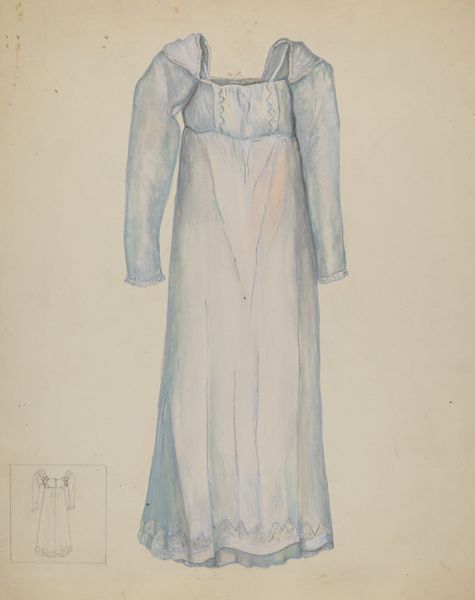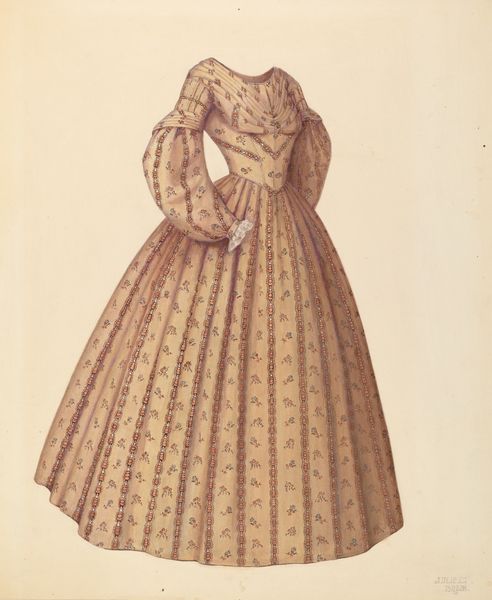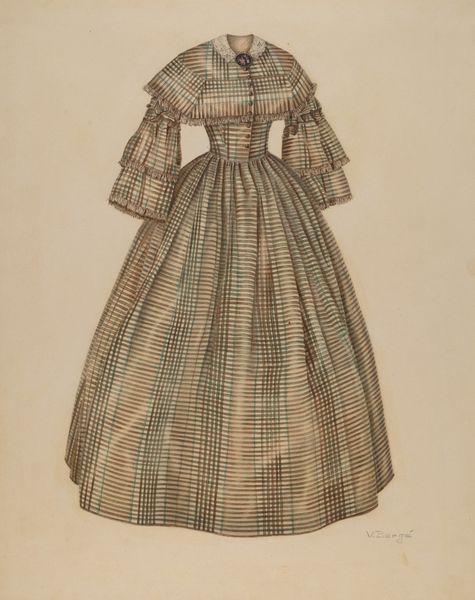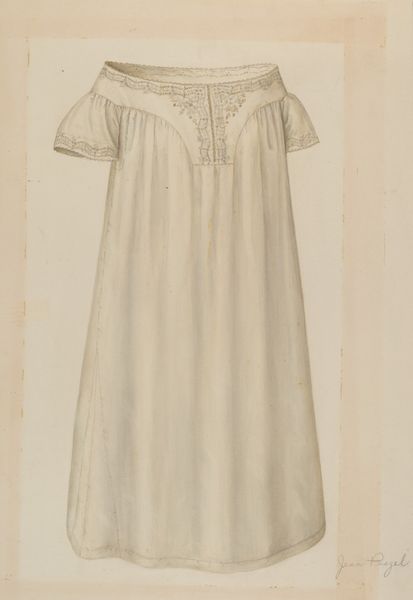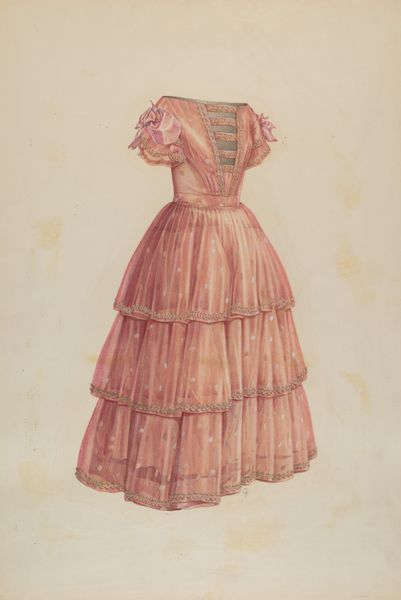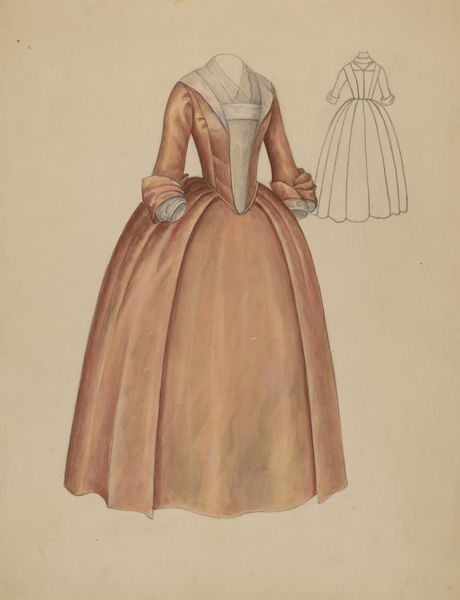
drawing, pencil, graphite
#
portrait
#
pencil drawn
#
drawing
#
pencil drawing
#
pencil
#
graphite
#
graphite
#
realism
Dimensions: overall: 45.6 x 36.2 cm (17 15/16 x 14 1/4 in.)
Copyright: National Gallery of Art: CC0 1.0
Curator: Looking at this work by Nancy Crimi, simply titled "Dress," and dated circa 1942, I'm immediately struck by its… ordinariness. It feels almost mundane, yet compelling. Editor: Yes, mundane in its subject, but meticulously rendered! The graphite and pencil on paper capture every fold and crease of this dress. You can almost feel the weight of the fabric. There's a real attention to the making and materiality of this garment, which transcends its practical function. Curator: Precisely! Consider the context: 1942, wartime. Resources were scarce, fashion shifted, and garments became statements. To render a dress in such detail becomes more than just portraiture; it acknowledges the social importance of dressmaking and adornment. It’s about understanding the social constraints and aesthetic expression of women in that period. Editor: The drawing's realism brings to mind the labor involved in its creation. Not just the labor of Crimi in producing the artwork, but also the unseen labor that produced the dress itself, including spinning, weaving, cutting, and sewing—multiple unseen pairs of hands at work. Curator: Indeed. It humanizes, if you will, an object we might otherwise overlook. We can use the art here as an index to discuss the social implications of design choices within a particular environment. The dress has a timeless quality, almost evocative of fashions from generations before; however, its representation anchors it specifically in that war period, offering insight into identity and aspiration within that specific era. Editor: And in contrast to fashion photography so prevalent even then, the graphite rendering brings it back to the basics. Back to the artist's hand and attention. Do we know anything about the circumstances of the drawing’s creation? Curator: Little is known, unfortunately. But we might consider how it was shown at the time and what galleries or exhibition spaces chose to exhibit the work in. It’s important to consider that museums decide whose narratives are elevated, what objects matter, and what aspects of culture we consider ‘worthy’ of display and discussion. Editor: Fascinating. Ultimately, I’m drawn to how this simple rendering holds layers of context regarding the economic climate, the unseen labour of production, and a collective sense of materiality during that period. Curator: Absolutely. This “Dress,” it makes us think about much more than just what someone might have been wearing.
Comments
No comments
Be the first to comment and join the conversation on the ultimate creative platform.
